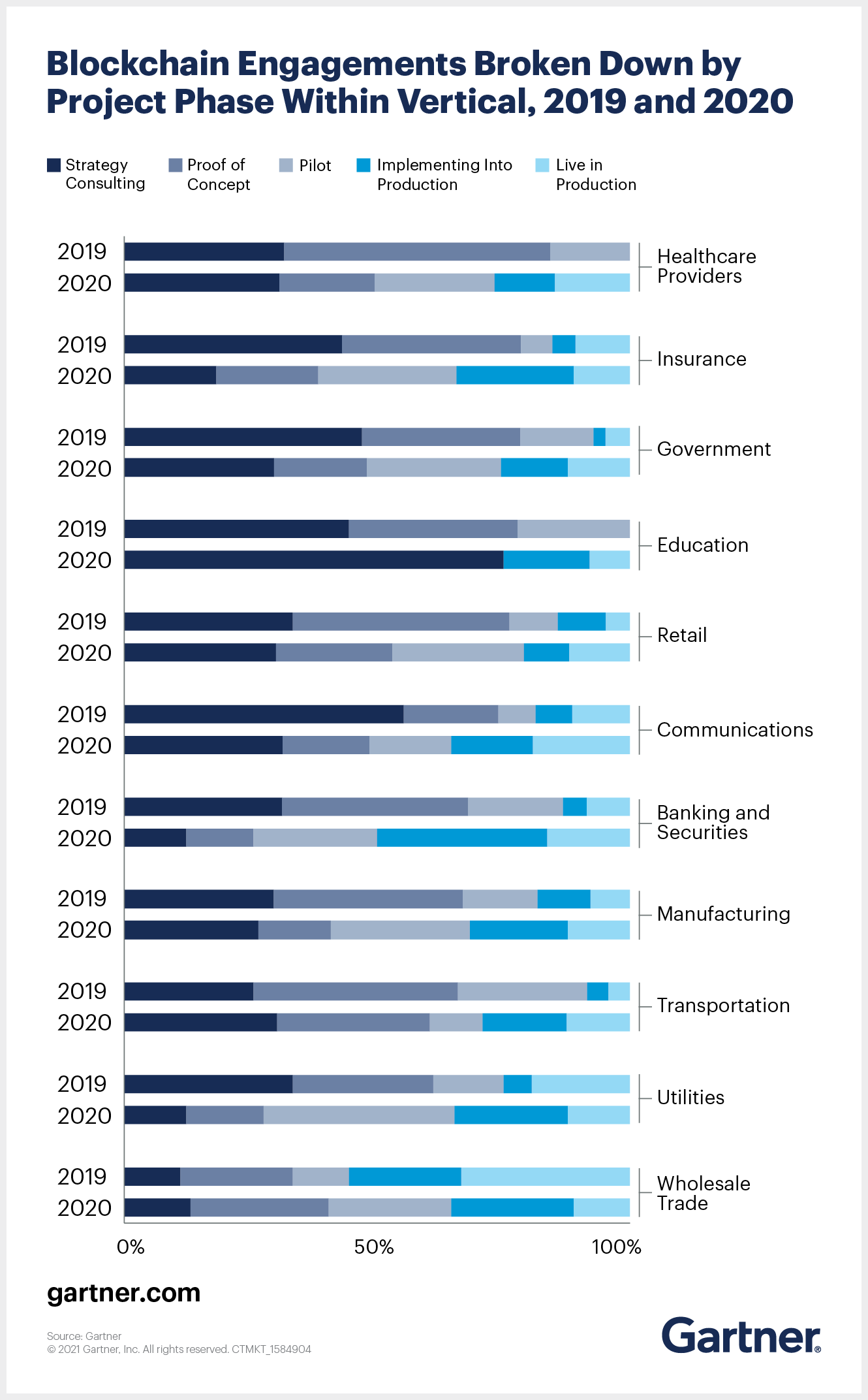22 December 2021
- Gartner client? Log in for personalized search results.
How Governments Can Successfully Embark on Any Blockchain Project
Contributor: Laurence Goasduff
Leaders must determine the suitability of blockchain and set the right expectations.
Governments worldwide have been trialling blockchain initiatives as transparent and secure solutions for transactions or digital interactions. By using blockchain, governments can permanently store asset data and transactions pertaining to land, property, businesses and vehicles on a public ledger, guaranteeing data integrity and high levels of security.
The Federal Office for Migration and Refugees in Germany is piloting the use of blockchain to allow coordination of asylum procedures across a wide network of relevant agencies and institutions. The United Nations has developed a blockchain-based service to validate pension entitlements of its retirees around the globe. However, the largest number of government blockchain projects remain in experimentation or exploration mode.
Download now: Be Ready for the Next Phase of the Blockchain Revolution
Prior to this year, there were far more public-sector blockchain projects in pilot or proof of concept (POC) than implemented into production or in production, according to the Gartner 2020 survey of blockchain consultancy and technical service providers. In 2021, the bulk of government initiatives (73%) were in an exploration or a piloting phase with uncertain outcomes, according to a sample of 87 government projects.
This is because some blockchain initiatives are less efficient or effective in getting to an outcome when compared to alternative technologies or approaches. In fact, Finland realised this around its MONI financial assistance scheme for asylum seekers.
In addition, public blockchain technologies are diverse, and most of them are still insufficiently mature. The 2021 Gartner Hype Cycle™ for Blockchain shows that 70% of technologies listed are still at or before the peak of hype.
To get projects moving, try to reduce the pressure to deliver tangible results by setting initial expectations deliberately low. “This is true especially for governments with less of a track record in this area. It is better to under-promise and potentially over-deliver, considering that most public-sector blockchain initiatives today still serve exploration and capacity building”, says Arthur Mickoleit, Director Analyst at Gartner.
Gartner predicted that by 2021, at least 5% of government entities would adopt blockchain as a transparent, authoritative ledger for some official records. Several blockchain-based registers have moved into large-scale piloting or even production, such as the Verifiable Organisations Network (VON) business register in Canada, or the land and real estate registers in the country of Georgia and India’s state of Telangana.
“Government leaders must be realistic about the largely uncertain outcomes of their blockchain projects”, says Mickoleit. “Focus on pragmatic blockchain use cases means identifying use cases that have the greatest chance of taking a blockchain project beyond the POC phase. Success also requires exploring alliances to extract long-term value from blockchain engagement.”
For example, the German federal government is facilitating cross-industry consortia to explore different digital identity uses of the future, including decentralised and self-sovereign identities (SSI). Collaborating as part of an alliance helps every involved actor move beyond the narrow value of private enterprise blockchain initiatives.
Above all, before embarking on any blockchain project, conduct a blockchain relevance test to determine the suitability of blockchain for the given initiative, and determine the optimal technologies for supporting any use case.
Experience Gartner Conferences
Join your peers for the unveiling of the latest insights at the Gartner conferences.
Recommended resources for Gartner clients*:
Blockchain in Government Requires Setting the Right Scope and Expectations
*Note that some documents may not be available to all Gartner clients.
